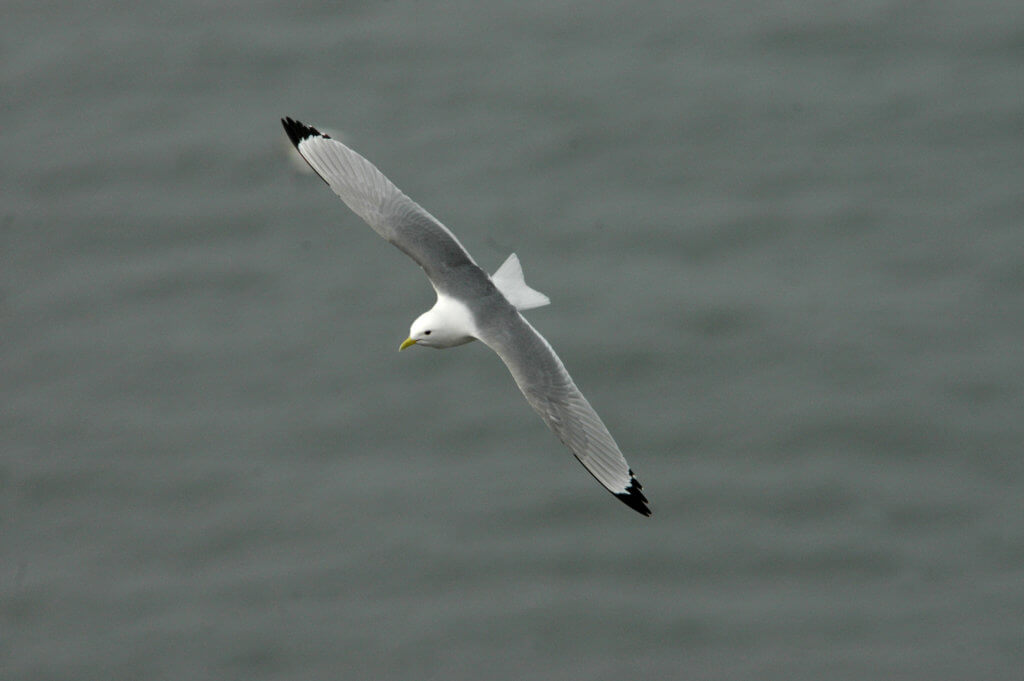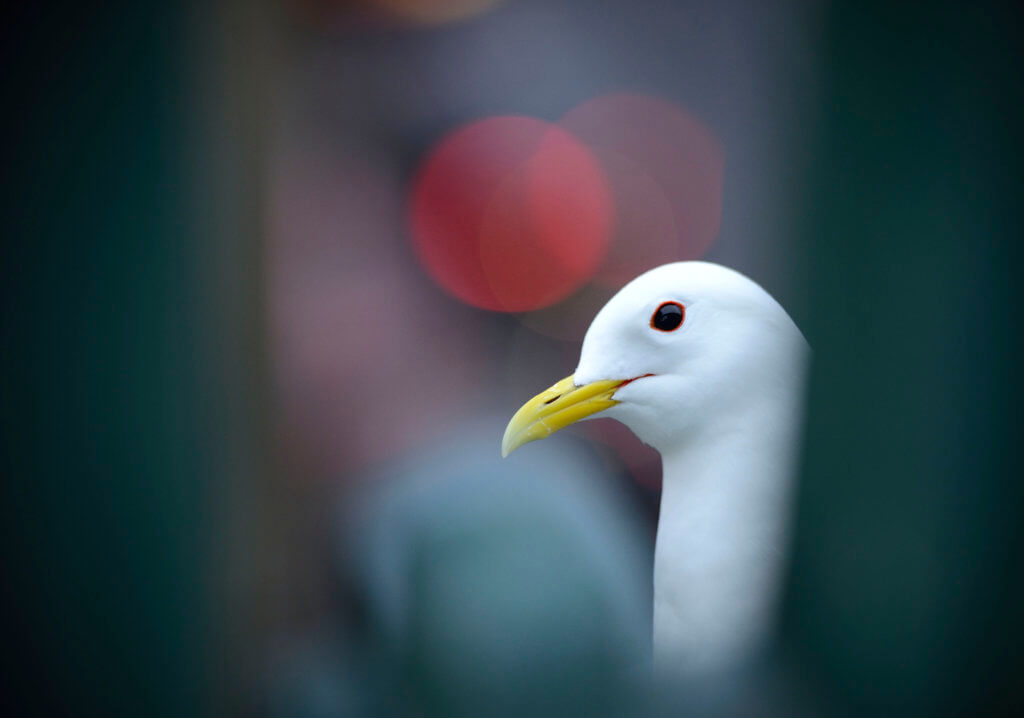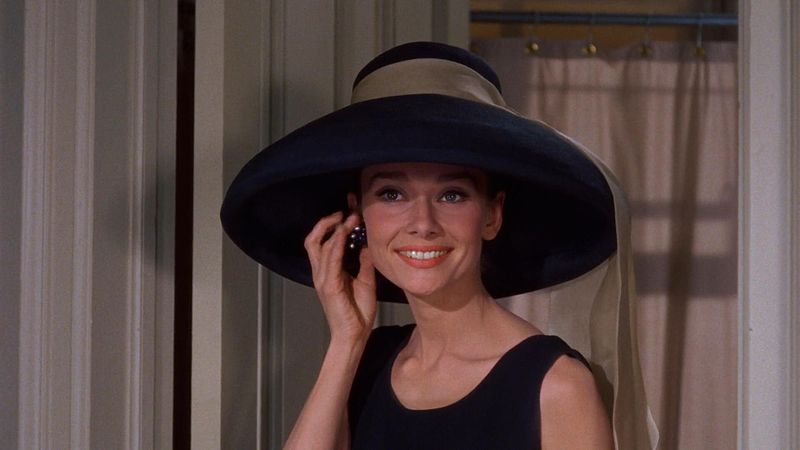
Blue Planet blues? Think of the Kittiwake. This really is a ‘sea’ gull – the most marine of all our gulls. It’s a classy looking bird with its black legs and ‘dipped in ink’ wing tips, smooth elegant grey plumage and friendly, intelligent and coquettish look. A strong contender for the Audrey Hepburn of the avian world.
Kittiwakes nest on coastal cliffs and feed out to sea – often far out to sea (see this research reported earlier).
Globally Kittiwakes have declined in numbers by c40% since the 1970s, and as a result are now regarded as globally threatned, but we are losing our Kittiwakes at a faster rate – in Orkney and Shetland breeding birds have declined by 87% since 2000, and on St Kilda in the Western Isles around 96% of the breeding population has been lost.
The causes? Hoovering up of their main food, the sandeel, by fishing fleets, particularly in the past Danish ones, is part of their problem. But sandeels are also suffering from warming seas. The sandeels depend on relatively shallow and sandy seas and their ranges are shifting northwards to places where there aren’t shallow sandy seas (a bit like climatic shifts of terrestrial species). And there may be other things going on too, but the bad things outweigh the good by quite a bit according to the trajectory of the Kittiwake population.
The RSPB’s Euan Dunn said ‘We need to ensure that the future management of the sandeel fishery is sustainable. If our internationally important populations of seabirds are going to cope with climate change, then we need to make sure industrial fisheries are not adding to their problems. This is an example of why fisheries policy is vital to the health of our seas. Our thinking on fisheries and marine protection must be as joined up as the seas on which we all rely.’.
Alex Kinninmonth, the RSPB’s Head of Marine Policy in Scotland, said ‘Frequent and widespread breeding failure is now being observed in several of Scotland’s breeding seabird species, particularly those reliant on sandeels. Kittiwakes are among the worst hit and are clearly struggling to cope with the effects of a changing food supply. If they are to have any hope, it’s critically important that we act on climate change, and make sure added pressure from fisheries, pollution and marine development don’t make an already bad situation far worse.‘.

And Audrey Hepburn said ‘I don’t believe in collective guilt, but I do believe in collective responsibility.‘ and ‘For beautiful eyes, look for the good in others’.

[registration_form]
Something that most people would not realise is that 50% of all fish caught worldwide is not for human consumption at all. It is turned into fishmeal to feed livestock and, strangely, farmed fish.
A South African company called Agriprotein has solved this problem by farming flys. The lava are turned into a high protein animal and fish meal. Even their waste product is turned into fertiliser.
Having followed the fortunes of this company for five years, they are now at the stage where they reckon to be able to build 25 units a year.
The stumbling block to their further progress now lies with governments adopting this animal foodstuff instead of fishmeal.
Salmon and trout eat flies. Pigs and chickens wouldn’t normally include fish in their diet.
Common sense says that governments would be hammering at their door to build units across the world.
Readers of this blog will know better.
I always found that the preferred food of a chicken was another chicken. Or a bootlace, if you stand still long enough. Let them eat maggots! It’s an excellent idea – only a short step away from feeding humans.
Calliphora TM milk, cheese, butter would be great and I’m sure Moonbat would enjoy it with a lightly-grilled faux filet of Pink Slime, like he wants us all to eat.
I was surprised when visiting the Arctic north of Svalbard, to find that Kittiwake was the commonest gull by far. I wonder if they are an Arctic species that has adapted to southern waters and are being especially squeezed as seas warm?
Phil – interesting, thanks.
The Danes even used to fuel their power stations with sandeels (until the fishery nearly collapsed in 2005) bringing with it a disastrous negative feedback control on the recovery of other North Sea fish stocks.
See the Blue Planet, but another one: http://blueplanetsociety.org/2009/06/where-have-all-sandeels-gone/
I also worked as a mathematician for the MAFF in Lowestoft, during the North Sea Herring collapse…
The Danes now claim that North Sea fish stocks “have rarely been healthier”. They want the right continue fishing sandeels…
See
https://www.theguardian.com/politics/2017/apr/18/denmark-to-contest-uk-efforts-to-take-back-control-of-fisheries